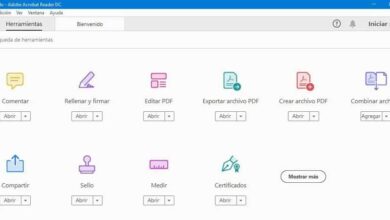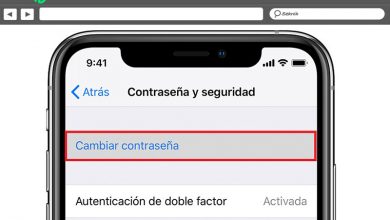What is the CHOOSE function for in Excel? - Quick and easy
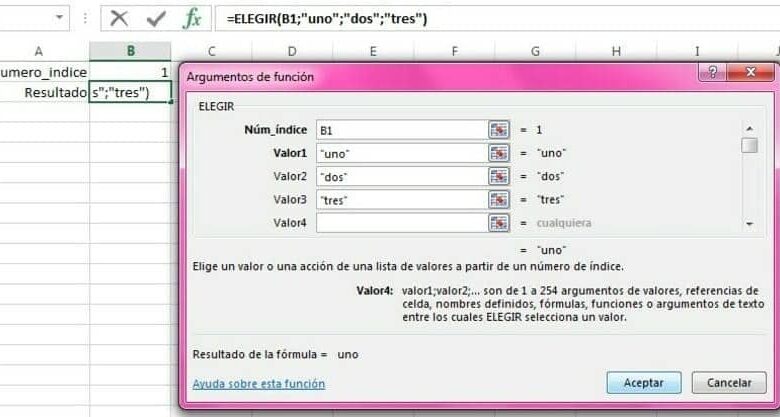
The Excel program has a lot of functions and tools, two of which are the function cube set and the choose function.
La selection function in excel is the solution if you are looking for a simple formula to calculate the data found in another cell in different ways.
Il is a research tool and reference used to return an item from a certain list, from a specified index. Although it allows up to 254 values.
One of the advantages of this great feature is that it allows you to win time when creating a list in Excel that requires multiple conditions and results, with the easy and simple application of this function.
Although this powerful and versatile function is well known, few use it in Excel formulas. In this article, we are going to show you its wonderful and versatile power which will be useful and easy to apply in some tasks with Excel. So let's see what it is.
The Choose function in Excel
Formulas
- = CHOOSE (index_number; value1; value2;…) Where:
Index_num
It shows the element of the list that we want as a result, and whose value must be between the number 1 and 254, since this is the maximum number of values allowed in the list.
Value1; value2, successively
Value1 is the first value found in the list, it is mandatory, the rest is at your discretion. They are not compulsory. The arguments to choose from are 1 to 254. These can be cell or range references, texts, numbers, functions, and even formulas.
Easy use of the Choose function
- To use the function "Choose in Excel" in a simple way , you will need to take the following steps:
- Choose the cell where you want the result to appear.
- Click the Insert Function icon located in the top toolbar, you can also right click on the selected cell and choose the Insert Function option located in the menu.
- Choose the function group Research and Reference in the list.
- Click on the CHOOSE function.
- Put the arguments, don't forget to separate them with commas.
- Press the enter button and you are done. Easy true.
Simple Examples of Excel's Choose Function
Example 1
We will take as index values the number 1, 2, 3. We position ourselves in the cell where I want the result to appear in letters, I click on it with the right mouse button.
Then we put the formula = CHOOSE (), followed (cell where is the number we want the name to appear in letters, whenever we change it), In our example this would be B1, then "one", "two", "three, which are the arguments of the dialog box (argument of the function), we click, we accept and that's it. It's simple.
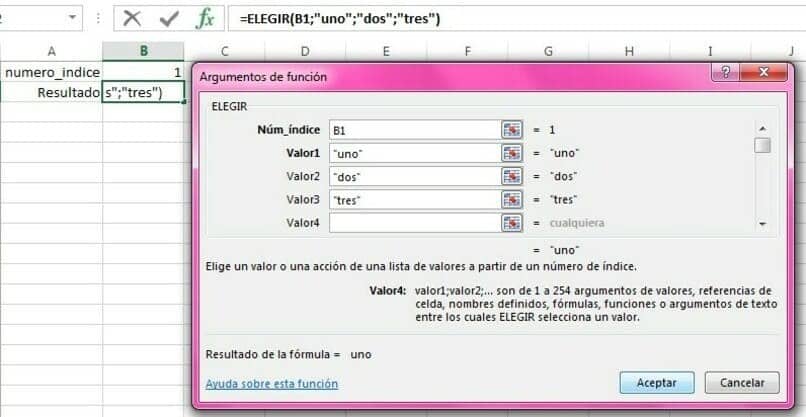
Due to the formula applied, we will get the value "one" since the first argument of this function shows us that we need position number 1.
You will be able to realize that when changing the value which is in the cell B1 for other valid numbers (1, 2 or 3, already established by you), we will see the corresponding element in the cell B2 .
Example 2
In the following image you can see a table with the performance evaluations of workers and their equivalents in expressions such as excellent, good, average or poor and in the second table you will see the names of the workers and their qualifications in numbers.
The idea is that in the last column of the second table with Excel's select function, we can link these evaluations to be placed next to the numerical note, their equivalent in sentence to proceed to the payment.
As you can see in the example table, the first thing is to place the argument of the CHOOSE function, which is the worker assessment , this indicates at the same time the position that we want to find in the list of values supplied to the function.
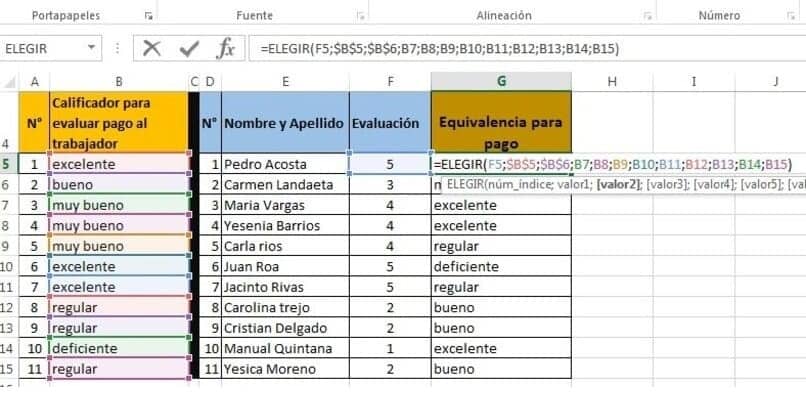
In conclusion, this function saves you a lot of time when writing formulas. Put into practice what you have learned here and apply this powerful " choice function From Excel and turn your extended formulas into a simple and easy formula. Let's go. While waiting for the next article, don't stop reading it.
With all the functionality of Excel, users will be able to create tables and word clouds , remove empty spaces , Among others.

